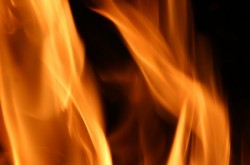What Does a Cremation Oven Look Like?
 The cremation process is difficult for many people to picture happening to their loved one’s remains. Unlike burial, which gives a feeling of calm quiet and eternal rest, cremation is hot, messy, and oftentimes frightening. You might be afraid that the body won’t be treated with respect, or that the incredibly high temperatures required to break a body down are uncontrolled and dangerous.
The cremation process is difficult for many people to picture happening to their loved one’s remains. Unlike burial, which gives a feeling of calm quiet and eternal rest, cremation is hot, messy, and oftentimes frightening. You might be afraid that the body won’t be treated with respect, or that the incredibly high temperatures required to break a body down are uncontrolled and dangerous.
While historical cremation practices might hold this to be true, modern-day cremation and cremation ovens are quite safe, sanitary, and practical. The cremation process is regulated so that it becomes more of a scientific breakdown of bodily remains than a blazing inferno, with the result that it is actually more decorous than the slow decay of a body underground.
The Cremation Oven
The cremation oven (also known as the cremation chamber or cremation furnace) looks much like a pizza oven in a commercial kitchen. The outside is usually made of stainless steel and other sleek metals, with electric panels for regulating the cremation process. The inside is a little more rustic, as it is lined with high-density fiber bricks that are designed to withstand incredibly high temperatures without wearing down too quickly. (These do wear down eventually, however, and have to be regularly replaced.)
Contrary to expectation, the flame portion of cremation doesn’t come from a fire actually in the chamber. Because you need a very high heat for a very concentrated period of time, the oven itself blasts a flame on the body from an above incineration chamber, all of it manufactured via electricity rather than the burning of fuels. This flame breaks down the body’s tissues, while the heat retained by the bricks helps to eliminate the natural moisture so that what remains is ash and larger pieces of bone.
The cremated remains that are removed from the cremation oven once it has cooled down look very little like the ashes you receive in an urn or box later. They are usually processed in a grinder to break down any bones before you are given the remains.
Complexity of Cremation Ovens
The cremation process described above is fairly typical, but it doesn’t take into account the complexity of a cremation oven as a piece of equipment. Whenever you are dealing with such high temperatures and more than one body being cremated in a day, it’s important that the equipment is able to handle it.
That’s why cremation ovens are made of so much more than the brick-lined chamber where your loved one will be laid to rest. Like a fireplace or oven in your home, it’s necessary for there to be exhaust fans, air dampers, circulation pumps, and flue ducts. All of these work together to regulate temperatures and ensure air quality as the remains are broken down.
Cremation isn’t always a pretty process, but it has come a long way from the funeral pyres of centuries past. Although few of us will ever get an opportunity to see a cremation oven in use, you can rest assured that cremation is a highly regulated and streamlined act designed to maximize the dignity of the disposal of your loved one’s human remains.



